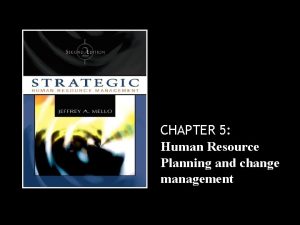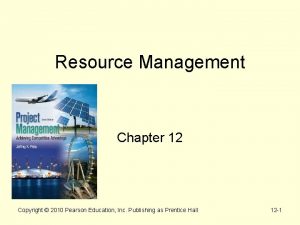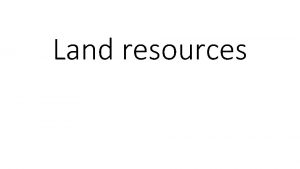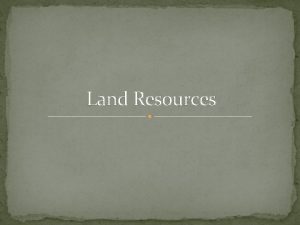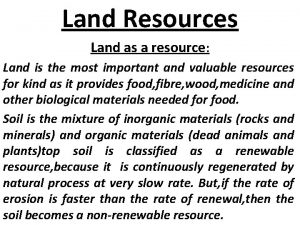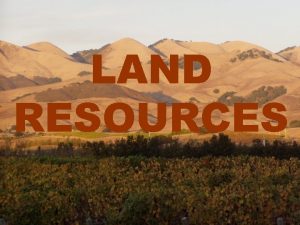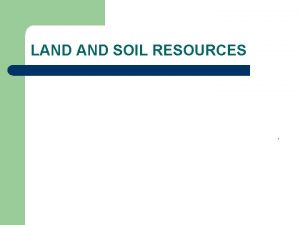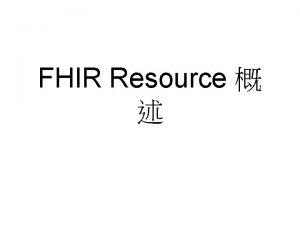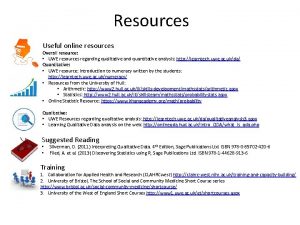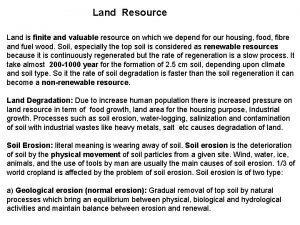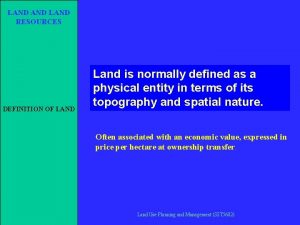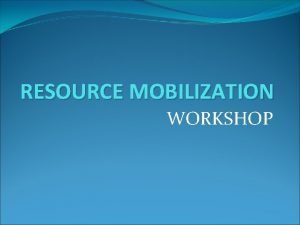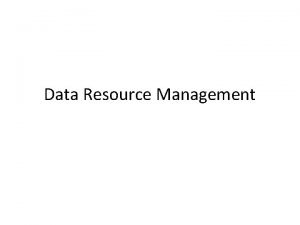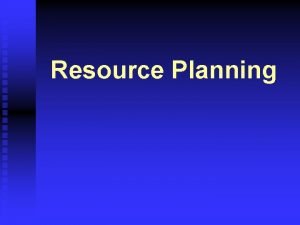Land Resources Land as a resource Land is

















- Slides: 17

Land Resources Land as a resource: Land is the most important and valuable resources for kind as it provides food, fibre, wood, medicine and other biological materials needed for food. Soil is the mixture of inorganic materials (rocks and minerals) and organic materials (dead animals and plants)top soil is classified as a renewable resource, because it is continuously regenerated by natural process at very slow rate. But, if the rate of erosion is faster than the rate of renewal, then the soil becomes a non-renewable resource.

Uses Of Land Resources ØLand provide, food, wood, minerals, etc. , for us. ØLand nurtures the plants and animals that provides our food and shelter. ØLand is used as watershed or reservoir. ØLand acts as a dust bin for most of the wastes, created by the modern society. ØLand is used for construction of buildings, industries.

Land Degradation �Land degradation is the process of deterioration of soil or loss of fertility of the soil. �Harmful Effects Of Land Degradation Ø The soil texture and soil structure are deteriorated. Ø Loss of soil fertility, due to loss of invaluable nutrients. Ø Increase in water logging, salinity, alkalinity and acidity problems. Ø Loss of economic social and biodiversity.

� Causes Of Land Degradation Population: As population increases, more land is needed for producing food, fibre and fuel wood. Hence there is more and more pressure on the limited land resources, which are getting degraded due to over exploitation. Ø Urbanization: The increased urbanization due to population growth reduces the extent of agricultural land. To compensate the loss of agricultural land, new lands comprising natural eco systems such as forests are cleared. Thus urbanization leads to deforestation, which inturn affects millions of plant and animal species. ØFertilizers and Pesticides: Increased applications of fertilizers and pesticides are needed to increase farm output in new lands, which again leads to pollution of land water and soil degradation. Ø

Damage Of Top Soil: ØIncrease in food production generally leads to damage of top soil through nutrient depletion. ØWater-logging, soil erosion, salination and contamination of the soil with industrial wastes all cause land degradation.

Man Induced Landslides are the downward and outward movement of a slope composed of earth materials such as rock, soil, artificial fills. Other names of landslides are rockslide, debrisslide, slump, earth flow and soil sreep. During construction of roads and mining activities huge portions of fragile mountainous areas are cut and thrown into adjacent areas and streams. These land masses weaken the already fragile mountain slopes and lead to landslides called man induced landslides.

Harmful Effect Of Landslides ØLandslide increases the turbidity of nearby streams, thereby reducing their productivity. ØDestruction of communication links. ØLoss of habitat and biodiversity. ØLoss of infrastructure and economic loss.

Causes of landslides ØRemoval Of Vegetation: Deforestation in the sloppy area creates soil erosion, which leads to landslides. ØUnderground Mining: These activities cause subsidence of the ground. ØTransport: Due to the movement of buses and trains in the unstable slopppy region causes landslides.

ØAddition of weight: Addition of extra weight(or) construction on the slope areas leads to land slide. ØGround water level: over exploitation of ground water also leads to landslides.

Soil Erosion Soil erosion is the process of removal of superficial layer of the soil from one place to another. Soil erosion also removes the soil components and surface liter. Harmful Effects Of Soil Erosion ØSoil fertility is lost because of loss of top soil layer. ØLoss of its ability to hold water and sediment. ØSediment runoff can pollute water and kill aquatic life.

Types Of Soil Erosion ØNormal Erosion: It is caused by the gradual removal of top soil by the natural process. The rate of erosion is slower. ØAccelerated Erosion: It is mainly caused by man-made activities. The rate of erosion is much faster than the rate of formation of soil.

Causes Of Soil Erosion Ø Water: Water affects soil erosion in the form of rain, run -off, rapid flow, wave action. Ø Wind: wind is the important climatic agent, which carry away the fine particles of soil and create soil erosion. Ø Biotic Agents: Overgrazing , mining and deforestation are t he major biotic agents, cause soil erosion. Due to these processes, the top soil is disturbed and exposed directly to the action of various physical forces, which induces erosion.


Desertification is a progressive destruction or degradation of arid or semiarid lands to desert. It is also a form of land degradation. Desertification leads to the conversion of range lands or irrigated croplands to desert like conditions in which agricultural productivity falls. Desertification is characterised by devegetation, depletion of ground water, salination and soil erosion.

Harmful Effect Of Desertification Ø Around 80% of the productive land in the arid and semi -arid regions are converted into desert. Ø Around 600 million people are threatened by desertification. Causes Of Desertification v. Deforestation: The process of denuding and degrading a forest land initiatesa desert. If there is no vegetation to hold back the rain water, soil cannot soak and groundwater level do not increase. This increases, soil erosion, loss of fertility.

v. Over Grazing: The increase in cattle population results in heavily grazing the grass land or forests and as a result denude the land area. The denuded land becomes dry, loose and more prone to soil erosion and leads to desert. v. Water Management: Over utilization of ground water, particularly in the coastal regions, resulting in saline water intrusion into aquifers, which is unfit for irrigation. v. Mining and quarrying: These activities are also responsible for loss of vegetal cover and denudation of extensive land area leading to desertification.

v Climate Change: Formation of deserts may also take place due to climate change, i, . e. , failure of monsoon, frequent droughts. v. Pollution: Excessive use of fertilizers and pesticides and disposal of toxic water into the land also leads to desertification.
 Resource loading vs resource leveling
Resource loading vs resource leveling Perbedaan antara resource loading dan resource levelling
Perbedaan antara resource loading dan resource levelling Fixed resources examples
Fixed resources examples Renewable vs nonrenewable resources worksheet
Renewable vs nonrenewable resources worksheet Transformation process
Transformation process What are landforms
What are landforms What are landforms
What are landforms Human resource management chapter 5
Human resource management chapter 5 Human resource accounting
Human resource accounting Community resource mapping template
Community resource mapping template Hr proficiencies
Hr proficiencies How to create a resource loading chart
How to create a resource loading chart Cloud resource scheduling
Cloud resource scheduling Gary dessler
Gary dessler Resource patient management system
Resource patient management system Edinburgh resource lists
Edinburgh resource lists Resource and talent planning
Resource and talent planning Cfa resource
Cfa resource







